|
Welcome to 2024. Last year was difficult for many people for a host of reasons. The world of animal welfare seems to have been turned upside down. This shift began in 2020, but 2023 seems to have been the worst year yet for people who advocate to help animals and people who need help. I personally attribute a lot of this to the pandemic not just because life became harder for many people but because some self-proclaimed leaders in the animal welfare movement seemed to have lost sight of what we all seek - saving the lives of more companion animals and making the world a better place for those animals. Ideas that probably should have been just tossed around after sharing too much alcohol and then discarded as absurd suddenly became operating models for organizations that have a lot of money, influence and power. Those organizations encouraged or provided political cover for animal shelters to:
All of that is the bad news. The good news is that you can make a difference by changing your perspective, something I have had to do myself. How? For me, the key is to focus not on the global issues, issues in a single country or state or issues related to national organizations run amok over which we have no influence, but by trying to make things a little bit better right in our own backyards. I can't use the phrase Dorothy shared in a famous movie because it is subject to copyright, but you get the idea. Focus on the area you consider home. Adopt from a local shelter if you can. Adopting an animal is a 10 to 15 year commitment not to be taken lightly and I know people can only adopt as many animals as they can care for. Please just consider a shelter animal from your community or your region the next time you plan to bring a new animal into your life. Most either were someone's beloved companion and all have the capacity to be just that.
Foster a local animal if you can. Fostering is just as important as adopting. Animals rarely behave in a shelter the way they behave in a home. Fostering an animal from your community allows the shelter or rescue group learn more about the animal's true personality to place that animal faster. For people worried about getting too attached, my hope is you would see your home as a stepping stone to the animal's new future. A step made possible through your generosity. Many rescues are foster-based and the number of animals helped are limited more by the lack of foster homes than by money. Cross-post to be exposure for shelter or rescue animals. I can't count the number of times I have seen people in the shelter and rescue community be critical of people who share about animals in need on social media platforms. They act as if your time is of no value unless you adopt, foster or volunteer. Placing animals is about marketing and the ability to place animals needing homes if limited by the number of people who know about a particular animal. It can sometimes take thousands of shares and comments to get an animal placed. Cross-posting is an important part of that. If someone faults you for now doing more, just laugh. You are helping in your own way. Volunteer locally to help shelter or rescue animals. Even if you can't adopt or foster, most shelters and rescues rely heavily on volunteers. Tasks can relate directly to helping animals like walking dogs, playing with dogs or cats, reading to dogs or cats or transporting dogs or cats to a rescue group or veterinary appointment. You can also help indirectly by helping to market animals, helping admin a social media page, collecting supplies or doing laundry. I spend a lot of time making flyers, doing small fundraisers and making videos in which animals appear to talk or set to music. Speak out to seek better for animals in your community. Most tax-funded animal shelters end the lives of healthy and treatable animals. People are paying for that. If you want better of the elected officials who are stewards of tax-dollars, tell them that. If you learn of neglect or cruelty at your local animal shelter, speak out and demand better. Only when enough people make it obvious to elected officials that issues related to companion animals are important will they listen and either modify their own behavior or be voted out of office. Donate locally to help animals. I know many people who donate to large national groups that claim to advocate for animal welfare while either doing exactly the opposite or while using donations to pay elaborate salaries or administrative costs. I call them the alphabet soup imposters because most are best known by their initials and all are self-perpetuating money making operations. Please don't give them your hard earned money. If you want to donate to help animals, do some research to find an organization in your area where your dollars will do the most good. Donations to municipalities are tax deductible - consider donating to your local animal shelter to cover the adoption fee for a shelter animal to get him or her placed faster or to help pay for extraordinary veterinary care. Also consider donating to help a rescue group in your area. Rescues rely entirely on the goodwill of the public to be able to pay for veterinary care for the animals they help. Animal rescues - please look in your own backyard first. Not a day goes by when I don't learn of someone in animal rescue who has decided to walk away from helping animals completely or who is so angry with the public that it is affecting their physical, mental and emotional healthy. I encourage anyone running a rescue group, regardless of size, to consider what they hope to accomplish using the resources they have. You cannot help 1) all the animals on the planet; or 2) all the animals in north America; or 3) all the animals in the United States; or 4) all the animals in your state. It is my hope that you will look to your own area first when it comes to helping animals in need. Almost every community has animals at risk of having their lives ended at local animal shelters not because there is anything "wrong" with them, but because the way most shelters are managed. Please look to your local shelter first before reacting to all of the social media content about all the animals who need to be placed. That is just too overwhelming and it is up to people in each community to advocate for change in their own areas. Do what you can, knowing it is enough. It is easy to get overwhelmed trying to help animals in need. Something comes across a news feed or someone tags us in a post and we want to do all we can to help. It can be too much on some days for me and I know it is the same for others. When you feel like you just can't take anymore, walk away. Take care of yourself first. There will still be animals in need when you are in a better place and are better prepared to develop a plan for how you can help, if you even can. You alone cannot save all the animals in your community and it in the end, that is not your responsibility. Every small thing you do matters and you will likely never know how the most simple of actions sets other actions in motion. Welcome to 2024. We can all do something to make it better.
2 Comments
I learned recently that Illinois passed Senate Bill 1882, called the "Safe Pets" Act which governs dogs and cats sold in pet stores. The new law does not prevent pet stores in the state from selling animals which are sourced from breeders. This comes as no surprise. Petland, the most prolific pet store chain in the country which sells dogs, already has eight retail locations in Illinois. The state cannot enact a law which would affect commerce for Petland because the stores are already open. The new law does state the following (among other provisions):
Many of these local laws go much further than the new Illinois law and I first blogged about them last year. These are locations where there are no existing pet stores like Petland selling dogs. The lack of those retail locations means that municipalities have the ability to enact pre-emptive laws to keep the stores from opening in the first place. The local ordinances I have advanced in some cities in my state require pet shops to source animals from shelters and rescue groups, prohibiting them from getting animals from breeders, brokers or from rescue groups which obtain animals from breeders or brokers for compensation (often referred to as the "rescue model.") As I have written about before, I obviously support these ordinances, resolutions, bills and laws which are, at their core, consumer protection laws. The Illinois law has limitations because Petland stores are already open there, but the language of the law makes it clear that it is also focused on consumer protection. And for good reasons. The Internet is replete with stories about people who bought a dog at a pet store, only to have that dog be terribly ill or have some genetic defect which results either in thousands of dollars of veterinary bills to treat/manage or which results in the death of the animal. The CDC has done multiple studies about pet store dogs spreading diseases to people, in some cases resulting in litigation. Then there is the less publicized scam in buying a pet from store: when the person who buys the animal does not understand they have leased the animal and it does not belong to them. I've heard a number of arguments against these laws, none of which are persuasive for me and some of which are just absurd. The laws take away personal choice. No. They do not. I admittedly promote adoption of animals from shelters and rescue groups. As much as I would like others to feel the same way, I cannot force them to share my values through magical thinking. I know plenty of people who get animals from breeders and cannot be persuaded to do otherwise. If someone wants to get a dog from a breeder, these laws do not prevent them from doing that. In places which have enacted laws about pet shops, that sale is just not facilitated in a retail setting. That does not mean the person cannot seek out a breeder of their choice who does not sell animals in retail stores. I read a blog on the website for the American Kennel Club which claims, "the purpose of these measures is get at not only retailers, but also breeders." We hear all the time that no "reputable" breeder would ever sold a dog or cat in a store, so people who have chosen to breed animals either for love of the breed or as a source of income are not affected by these laws. They are free to sell those animals directly to consumers just like they always have. These laws are only aimed at shutting down "puppy mills". It is true that the fewer pet stores in our country which sell dogs from large dog breeding operations (which I consider mills regardless of how well the dogs are cared for), the less profitable those operations will be. But to say the laws are only enacted to try to close those places loses sight of the primary purposes for the laws. Consumer protection. Perhaps a time will come when enough of these laws are enacted across the country when it will have a huge impact on those people currently breeding dogs for sale in those stores. The more stores which close or which switch to the rescue model, the fewer places there will be for the dogs to be sold. That time is a long way off. Millions of dogs are bred in the United States each year and this is a huge industry. The dogs are sold on the internet on websites which look polished and which leave the impression the parent dogs are well cared for. Dogs are also sold at auctions and in some cases, the dogs are being purchased by rescue groups which claim they are saving the dogs they buy from a fate worse than death while at the same time remaining willfully ignorant of the dog or dogs who will take the place of the dog they bought at auction using the money they paid. The laws prevent people of color from getting a dog of their choice. This is a new argument I first heard a few months ago and the explanations go something like this: 1) Many shelters and rescue groups making adopting an animal incredibly difficult (this is often true) which; 2) negatively impacts people of color; so 3) those people who have not been able to get a pet from a shelter or a rescue group need the ability to get a pet of their choice from a pet store as an alternative. I am the first to admit that there are shelters and rescue groups which make adopting an animal so difficult that people just give up. There have been a couple of recent articles about this in the New York Times and in The Cut. We had a panel discussion as part of the No Kill in Motion series (from No Kill Movement) recently in which we talked about this subject. Organizations like CARE - Companions and Animals for Reform and Equity are working hard to shine a light not only on the lack of diversity in shelter leadership, but also on how difficult some shelters make it for people to adopt because of their judgment of the worthiness of those people. The work of CARE is invaluable and it is long past the time when we should be having these discussions about inclusion and equity. But for every shelter and rescue which makes adoption difficult, there are many more which are doing all they can to place pets in need by making adoption exceedingly easy by using open adoption counseling and providing animals who are fully vetted and microchipped, sometimes with the adoption fee being incredibly low or waived. To say that people who have been turned away from a shelter or rescue should go to a pet store as their next option is not compatible with the argument that there are scores of reputable breeders across the county who do not sell pets in stores. I plan to take up this issue of how these laws affect people of color with James Evans of CARE to get his take on the argument. I have written many times about the subject of puppy mills and pet stores. I have often wondered how different our country would be had the UDSA not tried to help struggling farmers some 70 years ago and recommended breeding dogs as a way to make money. We would still have dog shows and people would still breed dogs, but would we see the production and sale of millions of dogs a year like we do now while at the same time destroying millions of dogs in places we call shelters? We will never know. I have also wondered how people would feel if we had never sold dogs or cats in stores from commercial breeding operations (many of which house dogs in conditions we would consider criminal) and we suddenly started doing that. Would people be outraged? I'd like to think so. I hope a day comes when we see an end to the sale of dogs and cats in stores and when people instead get companion animals from shelters, rescues or from responsible breeders as a direct purchase. Stores are great for a lot of things. Furniture. Clothing. Food. Not for pets. It's time for that to end. The sooner the better. (image of pet store puppy courtesy of Hector Parayuelos)
All of us have crossroads in our lives. Points in our lives were some significant event happens that puts us on a path different from what we had anticipated. One crossroads for me was in 2006 after the euthanasia of 16-year old dog, Snake. We knew that she would not be able to stay. She had become trapped inside a body which no longer served her well and had begun having cognitive problems. We didn't want her to suffer. We had our veterinarian come to our house on April 22, 2006 to euthanize her. Although we had been planning for the day for quite some time, we didn’t choose the date ahead of time. She had had a rough night and we decided that morning to let her go. We didn’t realize until much later that we had chosen Earth Day to let her go. It seems fitting in many ways. Snake was a coydog; she was part German shepherd and a coyote. She was always a little bit of a wild child. We buried her on our property and gave her back to the Earth; a fitting farewell for such a beautiful soul. It was after the loss of Snake that events happened that I didn't anticipate in which put me on another path. As much as we prepare, we are never really ready to lose those we love. How can we be? I didn’t adjust well and found that I needed an outlet. I started donating to the animal shelter in the city where I work, hoping to help some other dog or dogs. It was only after donating to the shelter for a few months that I had an unwelcome epiphany about what was happening there. Healthy and treatable animals were being destroyed every day along with the sick and suffering. I guess I should have known this was happening, but I just didn't. I think that's common for a lot of people in America. We presume that shelters use our tax dollars to function consistent with public values when that is not always the case. I know what the word euthanasia means and what was happening at this shelter was far from it in most cases. Learning what was happening at my local shelter outraged me, angered me, and just made me feel tired and sad. But it also fueled me. I began a path of self-education. Why were animals who were perfectly healthy dying in shelters? Was it just something in the South? Was this happening everywhere? I just had to know these answers. My education took years and continues to this day. This journey of awareness led me to another crossroads. I had two choices. I could continue my education while lamenting what was happening. I could say the issue was just too big for me to take on myself. Or I could try to do something about it. In the end I decided I had to act because I saw it as a moral imperative. If I did not speak up, my silence would have been my consent. Exactly what I would do with my intent and knowledge would end up taking years. I originally wrote to City officials in 2006 to express my outrage at what was happening at the shelter and didn't get very far. I was pretty much told this is just the way things are and we can’t afford to do any better. I didn’t believe either statement. The city in which I work is Huntsville, Alabama. The community is both incredibly progressive and proud. People from other states and even other countries live here. We have a large military base and we support the space program through the Marshall Space Flight Center. We are considered a medical hub where people come to get specialized treatment. Considering all the great things happening in the city, surely we could break from the status quo and do a better job to save the lives of shelter animals. The city council did not agree. I was left to stew in what I had learned, continue my education and look for some other opportunity to be a change agent. I found this incredibly hard to do. With each passing day, the lives of animals were at risk. Animals just like Snake who no doubt would have been killed in the Huntsville shelter. The deaths of both my parents to cancer in a six-month period of time ended up being another crossroads for me. We lost dad in October of 2010. We lost mom in April of 2011. We knew they would leave us and tried to be ready. There is just no such thing. Like the loss of Snake, the loss of my parents put me in a different place in my life than I anticipated. For most of my life I had allowed myself to think that I would have decades left to spend time with my parents. I had always known that life was short and precious, but the loss of my parents quite suddenly really reinforced for me that my own time here is finite. I thought that in spite of personal failure to affect change in my area that I may do better if I got some help. That is when I decided to form an advocacy group called No Kill Huntsville. I believed that rather than speaking out about the issue by myself, surely there had to be strength in numbers. The group was pretty large when we started, but as is the case with many things, lots of people talk but only some people do. We ultimately ended up with a small group of like-minded folks who agreed to speak with one voice to try to effect change in our area. No Kill Huntsville is now and in our 10th year of advocacy. It hasn’t been easy, but we got what we hoped for: change. The changes which have been made at the tax-funded animal shelter are both shocking and incredibly rewarding. We always promoted, and still promote, the No Kill Equation first shared with the world by Nathan Winograd in his 2009 book called “Redemption: The Myth of Pet Overpopulation and the No Kill Revolution in America.” The book was a game changer for me as it has been so many other people who have read it. There will always be differences of opinion or how we got to a point where the shelter was destroying three out of every four animals to a point where the shelter is saving approximately 97% of the animals. It’s hard for people to admit that change can be ugly and uncomfortable. I feel confident that but for the advocacy of our group, little would have changed. The shelter was making incredibly slow progress at the time we first took our issue to the public and got really vocal about it in the area. We were vilified in the community. At one point we were called terrorists. But I know we made a difference. There was an episode of a program called MythBusters years ago that had to do with the benefit of slapping someone across the face. The show is no longer being produced but I'm sure the episode is still out there somewhere. What was being investigated was if someone's behavior really can be modified after having been slapped across the face. The results of the tests confirmed that be to be the case. A lot of people criticized our advocacy during the most difficult years because they focused on the messenger and not on the fact that the message was necessary in the first place. We were told to be nicer, to stop being so critical. We were told that we just had to go along. I know for myself that we were always incredibly diplomatic and respectful. The worst-case scenario for me is that our advocacy served as a slap across the face to city officials and the public to get them to wake up and see that things not only should be but different but could be different. I know our efforts were much more than that, of course. In the summer of 2018 I had a meeting with documentary film maker Anne Taiz who was working on a film about No Kill animal shelter philosophies and programs. Anne traveled to Huntsville as part of her research to talk to me about what our group had done to that point. Toward the end of our meeting Anne said, “you know, you really should write a book about this.” I'm pretty sure that I laughed. Although I had been blogging and writing about our experiences over a period of years, I never really considered writing a book. What would it say? Who would even read it? Would it help anybody? After thinking about it for a few months, I decided again that life was short and that my time here was not guaranteed. Why not write a book if it could help other people? I self-published my book about on Amazon on April 22nd, 2019, the anniversary of Snake’s passing. The whole point in publishing a book was to help other people in other places. People like me. People like people in our advocacy group who were just common folks in the weeds with full-time jobs who came together because we knew that somebody had to do something. It had been years since Nathan Winograd had published Redemption and I thought it might help some people to learn how we used the No Kill Equation to change things in our area. After consulting with attorneys at work, I got umbrella insurance before I published the book. I know from my work in the legal field for almost three decades that the ability to defend a lawsuit and the ability to prevent a lawsuit are not the same. Thankfully, the two-year statute of limitations to sue me has now run. The book is priced to print which means no money is being made. When people order the book, they’re paying for the cover and the paper. As is the case with many small acts of advocacy for the sake of animals, I guess I'll never really know how much good the book has done. I've gotten a lot of feedback in the last couple years from people that told me that it really did make a difference for them. They had situations similar to ours and they just didn't even know where to start or what to do. Reading the book gave them the information and the courage that they needed to speak out for the sake of animals in their own area. The book will never be a bestseller and I fully acknowledge that it has kind of a narrow audience. But I feel pretty good about it. I feel like it served the purpose and hopefully will continue to serve its intended purpose for a period of years to come. I asked some folks for feedback to share with this blog and would like to thank them for helping me. If you know shelter animals in your area are being destroyed needlessly, know that you really can make a difference to affect change. It takes information, time, passion and commitment, but you can be a force for good. Choose the path that is the most important to you. You never know how far you will travel or what you can accomplish if you don't try. I recommend this book to everyone interested in animal rescue or sheltering. I like to highlight key points as I read, but if I had done that with this book, the entire thing would have been highlighted. After reading it, I purchased multiple copies for local shelter managers and fellow animal rescuers. It's a perfect ‘cliff notes' version of Nathan Winograd's Redemption and a practical ‘how to’ study rolled into one. It should be required reading for anyone who cares about animals.” - Jennifer Watkins, Shelter to Home, Inc., Wyandotte, Michigan Not Rocket Science may have been written about Huntsville, Alabama, but it is the disturbing reality of our broken ‘shelter’ system everywhere. The book very accurately describes the perils currently faced by homeless animals in the majority of municipal animal control facilities across the US. As an advocate in Georgia, I have had far too many of the same experiences that Aubrie describes. This book is essential reading for any animal welfare advocate and I highly recommend it to all animal lovers. There will be both sad and happy tears as you follow the courageous and inspiring journey of the No Kill Huntsville team. But, at the end, you will have a concise, comprehensive resource and a determination to be part of the solution. Ignorance and apathy are the enemies. For about $5, this book can help you overcome both at your local ‘shelter.’" - Shari Cahill, Silver Comet Animal Welfare Alliance, Milton, Georgia Not Rocket Science: The Story of No Kill Animal Shelter Advocacy in Huntsville, Alabama is the up-close, inside story of what it took to bring a highly regressive, open-admission animal control shelter to save rates in the mid and upper 90%. A must-read for advocates seeking to bring No Kill to their communities, Not Rocket Science presents the unvarnished truth behind this inspiring and remarkable transition. If you have heard about the inspiring tale of Huntsville's success, but have not read this book, you don't really know how the City of Huntsville became one of the most exciting shelter stories in the nation. Order it today." - Mike Fry, No Kill Learning. Minneapolis, Minnesota Aubrie Kavanaugh has written a seminal book, It’s Not Rocket Science, about modern animal shelter reform. Although the No Kill Movement has been around for decades, the last 10 years has seen a surge in successful animal shelter reform driven by advocates like the author, Aubrie Kavanaugh and her associates. Nathan Winograd’s Redemption from 2008 was the formative publication that launched a revolution in modern animal shelter reform. It’s Not Rocket Science shows us how the philosophy Winograd presented is now proven to succeed with a clear history of the reform of Huntsville, Alabama.” - Davyd Smith, No Kill Colorado, Denver Colorado Not Rocket Science is an unvarnished look at the hard work required to make progress toward no kill in a resistant environment. It is an excellent step by step guide for no kill advocates who want to take action in their own community but aren't sure how to start and, more importantly, how to keep going when hitting roadblocks." - Shirley Marsh, Yes Biscuit, South Carolina It happens every day. Pets are displaced from caregivers for a variety of reasons and not all have to do with someone’s irresponsibility. A cat slips outside when a child leaves a door open. A dog escapes a fenced area when a contractor leaves a gate open. A cat is scared by loud noises or fireworks and runs from a yard in fear. A person is in a traffic accident and the dog traveling in the car with them runs off when a door is opened. Severe weather arrives quickly and pets go missing either before or after a storm. We try to do our best to make sure our companion animals are not separated from us, but sometimes our best is not enough. Most animals who get lost or go missing don’t make it back home for one reason: they cannot be identified. I see posts every day on social media about lost animals someone has found. Many people do the right thing and alert local animal control authorities to increase the chance of the caregiver being able to find their lost pet. Just as many people don’t take that step at all, instead choosing to either keep the found animal or give the animal away to someone else. I know people joke about what their pets would say if they could talk and while we know that won’t happen any time soon, it would certainly make it easier to get them back where they belong. “I got lost when I chased a squirrel and then another dog and then a cat. But I live at 123 Main Street. Can you give me a ride home?” There are many ways to help pets be identified if they are lost. A dog collar with a phone number. A collar with a tag what includes a name and phone number. As I have written about before, my go-to recommendation is to have a microchip in addition to these other methods because it cannot fall off, cannot be torn off and cannot be taken off by someone who finds your pet. Our dog wears a collar with his rabies tag, but it also has a tag with his name, on the back of which is his microchip number and the phone number of the manufacturer to call if he is found. A microchip is not a GPS tracker. It’s a small implant, about the size of a grain of rice, that functions using radio-frequency identification which does not require a power source. Think of it like a barcode for your pet. When a microchip scanner is passed over the pet, the microchip gets enough power from the scanner to send the microchip identification number to the scanner. That number is then used to trace the animal back to your registration for the chip. There is no battery, no moving parts, nothing to lose, nothing to charge and nothing to wear out. The microchip will last for the lifetime of your companion animal. Beyond the obvious simplicity of microchip, it has another advantage. If your pet is stolen, the chip is your “proof” that the animal belongs to you. All of this is dependent, of course, on registering the microchip with the manufacturer and keeping that registration information current whether you move or whether you have to re-home your pet yourself for some reason. Just this morning I saw a story on the news about the power of microchipping. A woman in Foley, Alabama, lost her dog more than two years ago. Brooke Lake opened the door of her house and her Beagle, Lilly, “caught a scent and she just ran.” Brooke did all the right things. She searched everywhere, called veterinary clinics, called animal shelters and still could not find Lilly. What Brooke did not know is that Lilly had found her way to a truck stop where someone picked her up and drove her to Oklahoma. Her new caregivers had trouble keeping Lilly inside their fenced yard and took her to an animal shelter. Lilly was scanned for a microchip and was traced back to Brooke. An Oklahoma rescue group will transport Lilly back to Foley this week to a very excited Brooke. This happy story would not be possible without Brooke having taken the time to have her dog microchipped. We hear stories like this often and as amazing as they are, they reinforce for us the fact that microchips work to get pets back home. So, where do you get a microchip and how much do they cost? It varies depending on where you live. If you got your companion animal from a shelter or rescue group, he or she may already be microchipped so check with that organization to get information from them first. Most veterinarians will microchip your pet although some charge a lot for that process. It’s often possible to get your pet chipped for a super low cost at a microchipping event in your area. You can also buy your own microchip and ask your veterinarian to implant it for you. I found a Home Again Microchip on Amazon for $13.75 and at Jeffers for $11.99. If your veterinarian will not insert a chip you purchase yourself to save money, it may be time to find a new veterinarian. Once the chip is implanted, make sure you register it and keep the registration information current. I also recommend having your veterinarian scan your pet’s microchip during regular exams to make sure the chip has not migrated to another part of your pet’s body. I also recommend you use a chip from a reputable company like Home Again, DataMars (Petlink), AKC Reunite, AVID or 24PetWatch. There are some really cheap chips which are part of a 900 shared manufacturer series (used globally) which are not as reliable.
I’ve had people tell me that they don’t think their pet needs to be microchipped because they live inside or are never without supervision outside. Considering how little a microchip costs, and the fact that our companion animals are priceless to us, I think all pets should be microchipped. We just never know what unexpected events may happen and once a pet is displaced from us, it is too late to lament the fact that we didn’t spend $20 to help them get back home. Microchipping is suitable for a variety of species we keep as animal companions. If your animals are not microchipped, please make plans to help them "call home." Pop quiz. A dog wanders onto your property or up to your front door. He looks dirty, is thin and has some blood on his fur. He’s not wearing a collar and is a bit scared, but appears friendly. Which of the following describes how you react and what you do? You -
If you answered with number 1 only, I hope you never cross paths with a lost dog. If you answered with any combination of numbers 2 through 5, you likely don’t have a very high opinion of others and you may end up committing a crime. If you answered with any combination of 6-10, you are to be commended. Millions of us share our lives and homes with companion animals and most of us consider them family members. It can be difficult to think of them as property, but that is what they are considered under the law, just like our cars and our furniture. The big difference is that most of our property cannot get lost, get confused or feel pain. Case law on the subject of animals as property and the value of those animals when they are stolen or killed is evolving. We have not reached a time in our society that animals have a status separate from the other things we “own.” Other countries have taken that step. In some ways this is a good thing. As long as my dog is my property, I have certain rights regarding the ability of someone else to keep him from me or the ability of law enforcement authorities to seize him from me. Animals get lost for a variety of reasons and not all of them relate to people being irresponsible. Most of us have heard the story of the dog who went missing on a family trip after having managed to get through a hotel door during a bad storm. The Washington family looked for him for 57 days before he was found in a field near a subdivision. We hear all the time about pets who have gone missing after automobile accidents. A few years ago, just that happened to a co-worker of mine. My co-worker and her family were on their way home from a trip and were traveling on a major highway when they were involved in an accident. Their dog was in the car. Although he was not seriously hurt by the accident, he was scared. The minute they opened the door he ran and kept running. They looked for him for hours and were not able to find him that same night. They kept looking for weeks and were ultimately able to find him with the help of a team of volunteers. A similar thing happened just this past weekend in Arizona. (image of Obi and his family courtesy of Nicole Rodriguez) Companion animals get lost or loose for so many reasons. A gate is left open, a contractor does not close a door, a child opens a door to go outside and an animal pushes past him or her. A dog or cat jumps a fence following a loud noise which scares them, including fireworks or gunshots. Our default assumption may be that an animal we encounter is loose because someone is to blame or people just don’t care enough. That is certainly the case some times, but most definitely not all of the time. My husband and I have personally encountered numerous lost animals over the years, many of whom we found on or near our rural property. I admit there was a time when I presumed the worst of people. I wondered how they could “allow” their pets to get loose or how they could care so little to “dump” their pets in a rural area, presuming they would be able to survive. My position on this has evolved over the years as my education on animal welfare issues has also evolved. We once had a shockingly thin hunting dog show up at our front door. “Buck” was wearing a tracking collar with a phone number which, thankfully, was still valid. It turns out he had gone missing from a pack of hunting dogs and had been missing for weeks. We didn’t feel great giving him back to the owner who showed little emotion when he came to retrieve Buck from our property, but we did it because it was the right thing to do. The last dog we “found” was crossing a busy highway a few miles from our house. I felt sure he would be hit by a car. Rich pulled into a nearby parking lot and was able to coax him toward our truck with some dog biscuits. “Buddy” was covered in mud so we took him home, cleaned him up a bit, contacted local animal control authorities to explain what happened (and in case there were any reports of a missing dog) and housed him in our workshop until we could get him to a rescue group which scanned him and held him for his “property hold period.” We drove around the area for weeks looking for lost dog signs and looking for properties my may have come from. He was a Great Pyrenees and we thought me might have come from a parcel on which livestock were kept. I posted about him on social media and on a website called Helping Lost Pets. I feel confident his family must have been looking for him just because he was such a stunning, laid back dog. The connection was never made and Buddy was later adopted by a wonderful family. I have often joked about “liberating” animals I see living in what I consider substandard conditions and know people who have done just that, one of whom was convicted a few years ago of theft and receiving stolen property. Another contact of mine is facing criminal charges now for her involvement with placing a blind dog who left his property, ran into the road and almost caused an accident. I hope she has found a criminal defense attorney and will find a way to negotiate return of the dog, perhaps with some agreement that the family not let a blind dog outside unattended. For me, it’s just talk. As much as I would like many of the animals I see to live the way my dog lives, they do not belong to me and there would be real world consequences to stealing them. I try to find other ways to help them either by donating items to be used for their care or enlisting the aid of rescue groups to approach the owners toward improving the conditions for the animals or encouraging the owners to surrender the animals instead. (image courtesy of Chriss Pagani) I see information every week about animals who are lost and the people who find them. These are people I would ordinarily consider Good Samaritans who mean well, but may not always make the best choices. I also learn at least once every few months about someone who has purposefully stolen an animal or animals. They do this knowing who owns the animal but while having made a conscious decision to take one or more animals because they don’t think the owner is caring for the animal properly.
If you find a lost animal, even if that animal comes on your property, you are not entitled to keep that animal any more than you are entitled to keep a car parked near your house with the keys in the ignition, the wallet you find when walking through a parking lot or the bicycle you see leaning against a wall outside of a business. If you knowingly keep a person’s property from them and/or later transfer that property to another person, you have committed a crime regardless of your good intentions. Every state has its own criminal laws about theft of property and receiving stolen property. In my state, theft of property in the fourth degree and theft of lost property in the fourth degree relate to property that is valued at less than $500. These are Class A misdemeanors which may result in a jail sentence of up to one year and a fine up to $6,000.00. Theft of property of theft of lost property valued at more than $500 but less than $1,000 are each Class D felonies which can result in a sentence of not more than 5 years and not less than 1 year and one day. Receiving stolen property is also based on degrees related to the value of the property and is a separate offense. I know this is an emotional topic. I know that people who find lost animals more often then not want the very best for them and are just trying to be helpful. This subject was recently explored on an episode of a popular television show called A Million Little Things; one of the characters in the show found a dog and kept him, only to learn about a year later that the dog's family had been looking for him and made flyers about their missing dog. As of this writing, "Gary" was struggling about what to do with the dog, whom he named Colin. The next time an animal in need crosses your path, please give some serious thought to how you would feel if your pet went missing. Wouldn’t you want the person who found your pet to presume the best of you, and not the worst, and do everything possible to help you find your lost pet? I know I would. Please take the time to at least contact local animal control authorities so you can get the animal into the animal control system and give the owners an opportunity to find him or her. That doesn't necessarily mean you have to take the animal to an animal shelter and leave him or her there. If you decide to find a new home for that animal yourself, whether you know who owns the animal or not, you are knowingly breaking the law and may be criminally charged and convicted. I hope a time comes when our companion animals have their own legal status as sentient beings. My couch cannot get up and wander away, crossing county lines. My car will not roll away on its own and end up miles from my office of my house. Some countries have changed their laws already. It’s time for us to get on board. It’s time to change the legal status of animals to protect them not as “things,” but as the creatures we love and value as they enrich our lives in countless ways. But in the meantime, please. Don't steal my dog. We’ve all seen it. The animals living outside in conditions we find abhorrent. The dog chained to a tree. The dog outside with no shelter in either pouring rain or freezing cold. What is your first thought when you encounter a situation like that? If you automatically assume that the people who own the animals don’t care about them, that is no doubt a natural reaction. Logic would dictate that if they cared enough, the dog would either be brought inside to live or would live outside in better conditions. The dog would at least have a doghouse and would be protected from the elements. I’ve driven past hundreds of properties over the years where I’ve seen these situations, uttered a few words of profanity, and wondered to myself why the people even have a dog if they force it to live in such conditions. I’ve gone so far as to buy dog houses for the dogs I see or even outdoor beds. I’ve had wheat straw delivered anonymously to try to help. But is judgment really the best way to react? I’m not so sure. As I wrote in my recent book about no kill animal shelter advocacy in the south, there are two cultures here in Alabama when it comes to companion animals. The attitude of many is that dogs and cats are animals and animals live outside. Period. Many people in Alabama (and, I would argue, in many places across the country), would no sooner bring a dog inside to live than they would set a place at the dining room table for a pig. It’s just not how they were raised and it’s not how they see their relationship with their companion animals. Houses are for people. Yards, barns and pastures are for animals. My personal preference is for all dogs to live inside with the people who care for them. Dogs are pack members who thrive from human interaction. Keeping them contained on chains is considered inhumane by every national animal welfare organization in America. Studies have also shown that the dogs most apt to be involved in fatality attacks include those dogs who are not sterilized, who live as “resident dogs” and dogs who have been mismanaged or subjected to abuse or neglect. One of the most gruesome legal cases in which I was involved was the result of a dog bite fatality attack of a WWII Veteran who was killed by two dogs when he went out to check is mail. Although he normally wore a whistle around his neck out of fear for dogs roaming at large (and to alert people if he had problems), he had forgotten to put it on the day of the attack. Police later found 33 other dogs living chained in a backyard inside city limits. None were sterilized and all were part of a breeding operation gone wrong. For all of my cussing and judgment of the people who house dogs outside, the reality is that not everyone was raised the way I was raised and no matter what I (or you) think is appropriate, some animals, particularly dogs, will never live inside. It won’t happen in some cases due to cultural differences. It won’t happen in other cases due to rental or leasing contracts which do not allow dogs to live inside. It won’t happen in still other cases because the dogs perform a role protecting livestock. Regardless of the reasons, I have come to believe that we do better when we do not make assumptions about the reasons for what we see and we instead focus on the well-being of the animals themselves. We should not be so arrogant as to presume that someone whose dog lives outside does not care about or even love that dog. When I was promoting an ordinance in the city in which I live to prohibit the chaining of dogs and to provide for basis standards of care for dogs who live outside all the time, one city councilman said something related to public buy-in for the law I have never forgotten. He said that the position of many of his constituents was summed up pretty quickly. “The mindset,” he said, “is that you can say my wife is ugly and my kids are stupid, but don’t tell me how to treat my dog.” His point was the care of dogs is very personal to people and they don’t like being told what to do or what not to do. So, what are we do to when we see a situation which we think is less than what the animals deserve? In the case of one organization in my area, the answer is simple. Offer to help. I first learned about an organization called HAWS – Helping Animals Without Shelter a few months ago. The mission of the group is both simple and vital: to provide help to people who need it to improve the conditions in which their animals live outside. The website for HAWS explains their mission this way. HAWS operates: exclusively for charitable and educational purposes. With donations from the public we provide shelter, cedar chips/wheat straw for bedding and preventative care for dogs outside restrained by chains. We also provide clean drinking water, treats, worm medicine and flea and tick treatment to make them feel healthy and comfortable in their environment. We assist low-income and senior owners with spaying and neutering which reduces the number of unwanted animals let loose in the community or dumped in overcrowded shelters and rescues. We educate the owners of unaltered animals about the benefits of spaying and neutering and we provide instruction to schools (at their request) on the proper care of animals. HAWS is an all-volunteer run organization with no paid employees to include the founder/director. HAWS receives no federal or state funding. We rely solely on donations from the public. HAWS’ current focus is on Madison County, Alabama, particularly places outside of city limits where there are no laws which dictate how animals who live outside are treated. (Alabama has laws about abuse and neglect, but they are somewhat vague and many in law enforcement are not trained on how to enforce the laws. Two recent efforts to enact a state law to define the single word “shelter” in an existing criminal statute have failed). I honestly wish that there were organizations like HAWS across the country. The organization tag line is “No Judgment. Just Help.” How refreshing. Yes, there are people who have dogs who live outside who likely could care little about the conditions in which they live. The dog may be on the property as some form of misguided security system. Upon being offered help, many of those people may respond with a resounding, “no,” or may feel strongly enough about it to demonstrate their displeasure by holding a weapon toward the person or people offering to help. What HAWS has learned, however, is that when an offer of help is made with no judgment, that creates an environment in which people feel more free to say, “yes. I would like some help,” as they learn something in the process. It truly becomes a situation of providing some education about how to house dogs outside which helps the people and helps the dogs. I recently completed a couple of video projects to help promote the mission of HAWS: a PSA for television which is currently in the rotation on local network television stations and a longer video project set to music which shows people what HAWS does to help with no judgment (shown below). I also launched a t-shirt fundraiser on Bonfire to help raise some money for supplies while at the same time creating wearable conversation starters to help spread the HAWS message. Lisa Shedd, the founder of HAWS, graciously offered to engage in a Q&A with me to help people learn more about the origin of the organization and what they do each and every day. I hope you will learn more about this wonderful group and I hope more groups like it are created across the country. No one likes to see dogs living outside in conditions which most of us consider inhumane. How we remedy that situation may be found more in a model of compassion than one of judgement. Enjoy. Q: What caused you to create HAWS? Was it some specific event or circumstance? A: We created HAWS because it breaks our hearts seeing so many dogs living outside chained, tangled and without shelter, clean drinking water or preventives to protect them from the elements or parasites that can cause them discomfort and harm. Q: Your tag line on your Facebook page is, "No Judgment. Just Help." Why is that important? A: Approaching owners with kindness shows them that you are there to educate and help them make their dog more comfortable, and not to point out what they may be doing wrong. Owners are very receptive when treated with kindness instead of being judged or told what to do Q: Describe a typical week for you regarding the services you provide. A: A typical week for HAWS starts by loading up vehicles with supplies(when available) needed to help provide a more comfortable and safe environment for dogs living chained outside. I spend 2 hours every morning setting up spay/neuter appointments for the pets of truly low-income families who cannot get help from other programs. I spend an hour or more answering emails, messages, voicemails and texts from people reporting dogs in need of our assistance and from people needing assistance with their dogs. We then head out to the field to help set up a better living environment for as many dogs as we can get to and also pick up supplies donated by the public who want to help us help these dogs. The HAWS team works long hours almost every day trying to help these dogs and educate their owners to the things that are available to make their dogs’ living area more safe and comfortable and explaining the benefits of preventives and the spaying and neutering of their pets. Q: What is the most difficult part of your mission? A: It’s definitely seeing the sad conditions that some of these poor dogs live in. Q: What is the most rewarding part of your mission? A: The incredibly happy, tail wagging, doggie kissing and dancing these that these dogs do when we have finished giving them a more suitable environment. Doggie kisses of joy being the best part. Q: What do you most need from the public to allow you to continue your work? A: HAWS always needs funding for vetting, spay/neutering and other supplies that we need to continue to help chained dogs. Some of the things that can be donated besides monetary donations are: flea and tick medication large and extra large gently used or new igloo or heavy duty barn dog houses gently used or new 20 x 20 x 6-foot outdoor kennels sunshades water buckets stakes for water buckets 4 x 6 x 8 foot treated wood posts for putting up trolley systems 12 x 12-inch or 15-inch paving stones or brick to put dog houses on to keep up off of ground long, heavy-duty zip ties heavy-duty 55-gallon trash bags dog food kiddie swimming pools(summer) large and extra large Kongs for the chained dogs to play (so they won’t get bored and chew up their houses and water bucket) I’m hearing a lot of chatter these days about a new phrase which is making the rounds: Socially Conscious Sheltering. Like many phrases used in animal welfare circles, the meaning of the phrase isn’t clear from the words used so I did some poking around to educate myself. What I found was disturbing. I am waiting for some voices louder than mine on the national stage to take on this issue, but am sharing my thoughts to get some conversations started. According to a page on the website for the Denver Dumb Friends League in Colorado: Socially conscious sheltering’s fundamental goal is to create the best outcomes for all animals. The noted best outcomes are reached by striving for the “Five Freedoms,” which were developed in the United Kingdom in 1965. A simple search about the Five Freedoms reveals that the origins of the freedoms relate to what is commonly referred to as “livestock production systems.” In 1964, a British woman named Ruth Harrison wrote a book called “Animal Machines” which described intensive livestock and poultry farming practices. Due to public outcry about the book, the British Government formed a committee to examine the way farm animals were treated. The committee presented a report in 1965 that concluded that farm animals should have the freedom to "stand up, lie down, turn around, groom themselves and stretch their limbs.” After the report was published, another committee was created to monitor livestock production leading to the “Five Freedoms” being codified (made law). They have since been adopted by a host of organizations and professional groups around the globe. The Five Freedoms are:
The Five Freedoms should not be controversial related to shelter animals. Surely all of us can agree that animals deserve to be properly cared for and should be free from hunger, thirst, discomfort, pain, injury, disease, fear, distress and should be able to express normal behavior. The problem arises when we try to apply these freedoms to animal shelters and the interpretation of what the words mean related to whether or not animals are kept alive. Hunger and thirst are easily addressed by any animal shelter. Shelter animals should have continuous access to clean water and should be fed a nutritious diet daily. Discomfort is easy to understand and should be easy to address. Animals in shelters should be housed in such a way that they are protected from the elements and have a comfortable place to sleep. Pain, injury or disease are also not complicated issues for animal shelters. Shelters should take immediate steps to alleviate pain, treat (or prevent) injuries and treat (or prevent) diseases. Expressing normal behavior becomes a little more complicated. What is normal to one person may not be normal to another. The reality is that most animal shelters are designed in ways which negate the ability for animals to behave normally. Dogs, which are pack animals, are normally housed by themselves in narrow kennels in which they can smell and hear other dogs, and may be able to see some dogs, but cannot get to those dogs. The kennels are ordinarily in rows which face each other allowing room for staff, volunteers and members of the public to view or access the dogs. It should come as no surprise that dogs in shelters do not behave normally due to the shelter itself more than a reflection of how they would normally behave. Dogs in shelters often show barrier aggression (which is really not aggression at all) and can display stress behaviors like pacing, jumping and barking. The situation for cats in most shelters is not much different. Most shelters house cats by themselves in stacked, stainless steel kennels. They can smell and hear other cats they more often than not cannot see and there is little room for movement. Fear and distress are also more complicated – many animals will behave in ways which show fear and distress inside the animal shelter for the same reasons they do not “express normal behavior.” Some dogs show fear-based aggression or barrier aggression which is not surprising in light of the manner in which they are housed. Cats often exhibit some form of distress due to being housed in small kennels. As much as we would all like to believe that we all want the same things for shelter animals, the reality is that is not the case. We are not all on the same page. Some shelters treat all animals as individuals who either were, or could become, someone’s beloved pet. They go to great lengths to explore all possible options to ensure animals leave the building alive and go on to lead wonderful lives with new families. Other shelters are not quite as progressive. They view the animals in their buildings as being there due to the fault of the irresponsible public which do not make enough good choices and which treat animals as if they are disposable (when, in fact, it is the shelter which is behaving that way by destroying healthy and treatable animals). Even if we all agree that the Five Freedoms are good in principle, using those guidelines to make decisions about which animals live and die is another matter. If a dog does not behave normally in a shelter due to the shelter environment itself, does that make it permissible to destroy that dog? If a cat is fearful and in distress because it is housed in a small kennel day after day after day, do we say that cat is “suffering mentally” and tell ourselves we are saving that cat from a fate worse than death by ending the cat's life? In some shelters, those are the very decisions being made. The Five Freedoms should be considered in light of why they were developed and when they were developed. They were created more than 50 years ago related not to companion animals, but to livestock. This does not mean they have no application to animals in our nation’s shelters. What it does mean is that the words should not be used to provide cover to regressive animal shelters which have not kept pace with programs and services being used across the country (and which have been known for a couple of decades) to keep shelter animals alive while ensuring they are properly housed, cared for and provided with enrichment opportunities. They words should not provide political cover to go back in time to a period in our history when animals were killed because it was easier than saving them or because death was seen as a better alternative to being housed in an animal shelter. My biggest concern thus far with the concept of Socially Conscious Sheltering is the idea that it is somehow better than, or in conflict with, no kill philosophies. Much to my disappointment, the website for the Denver Dumb Friends League goes on to state the following:
In the no kill movement, the phrase “no kill” means we do not destroy healthy and treatable animals. Period. The No Kill Equation which was developed by Nathan Winograd and is being used by animal shelters across the country serves to both keep animals from entering shelters in the first place and serves to move them through the animal shelter as quickly as possible. No kill philosophies do not promote “sheltering homeless animals with the intention of keeping them alive indefinitely irrespective to the pet’s level of suffering.” They serve to treat all animals as individuals who are worth of our attention, time, patience and commitment to keep them alive. It is also not helpful to say that no kill proponents “often spread misleading and inaccurate information which, unfortunately, is believed by many people.” That is a loaded statement for which no details, examples or support has been provided at all. The Denver Dumb Friends League is not the only organization which promotes Socially Conscious Sheltering while at the same time making the no kill movement seem irresponsible and uncaring. A simple Google search for the phrase results in a number of hits. I found a full page of information on the subject on the website for the Santa Cruz Animal Shelter in California which credits the content to the President and CEO of the Denver Dumb Friends League, the President and CEO of the Humane Society of Pikes Peake Region and the CEO of the Humane Society of Boulder Valley, all in Colorado. This website states that Socially Conscious Sheltering is being “slaughtered by the No Kill Movement” (perhaps not the best choice of words) and that “No Kill is Slow Kill.” In April, the Colorado Veterinary Medical Association Board approved a position statement “supporting the socially conscious animal community movement and opposing the no kill movement in animal welfare." According to the CVMA website, the no kill movement increases animal suffering, threatens public health, causes animals to languish in cases, causes dangerous dogs to be placed in the community, and puts animal welfare at risk. I would honestly like to see support for those statements, if they even exist. I am the first to admit that there are some organizations which use the no kill phrase in ways which do not comport with no kill as a social movement, but those places do not represent the entire movement any more than the criminal behavior of some backyard breeders represent the entire breeding industry or any more than the collecting behavior of some animal rescue groups represents all animal rescue groups. Wow. Just wow. We sometimes joke in the state where I live, Alabama, that time travel really is possible. It just depends on where you go and who lives there. There are antiquated beliefs and values to be found across the state which have not kept pace with the rest of modern society. As much as Colorado has a national reputation as being progression on a number of fronts, it appears that the state has taken a trip back in time when it comes to animal sheltering concepts, relying not on the progressive and genuinely successful programs of the No Kill Equation, but instead focusing on a set of freedoms developed more than fifty years ago. Perhaps we should not be surprised when we consider that BSL (Breed Specific Legislation) is still alive and well in Denver even though it has proven to be ineffective. I feel confident my dog will never end up in an animal shelter. Having said that, if he did end up in an animal shelter, I want the shelter to function using no kill programs and services to help him while still providing the Five Freedoms. I want him to have access to nutritional food and clean water. I want him to be housed in a place that keeps him safe from the elements and allows him to sleep comfortably. I want him to have the ability to go outside for walks, to run and play, and to interact with other dogs. I want him to have enrichment using toys, treats and by participating in play groups. If he acts fearful or stressed, I want him to be given opportunities to express normal behavior outside of the building and not be judged by how he behaves in a small kennel. If he hides in the back of his kennel or paces, I don’t want him destroyed because someone thought he was “suffering” and felt that death must be a better alternative. If he stays in the shelter for a few weeks without being adopted, I don’t want him destroyed because of some fabricated expiration date which says he has been there too long. The dog I’m speaking about was in a municipal animal shelter for over a month before we adopted him. He lacked manners. He was heart worm positive. He was kept alive and we thankfully found him. Had he been housed in an animal shelter in some places in Colorado, I do not have confidence his outcome would have been the same. And that would have been a tragedy. If you’re not sure how you feel about Socially Conscious Sheltering as a “better” alternative to the no kill movement, think what you would want for your own animals. I know my answer. What’s yours? Note: After I published my blog the Denver Dumb Friends League modified the Socially Conscious Sheltering page of the website to remove the text I quoted above. It still, however, has a FAQs page which contains the following language which I find incredibly unhelpful. Who is being divisive now?
As I stated above, trying to describe all no kill advocates in such broad generalizations is disingenuous. Stating the Austin study was "flawed" while providing no information to back that up in any way is also misleading. We knew Rusty was heartworm positive when we adopted him from the Pell City Animal Shelter on September 19, 2017. We were told it was a “light positive,” but since heartworms are heartworms, the number of worms did not matter. Rusty had a number of behavioral issues to overcome and the fact that he was heartworm positive just added one more aspect to his rehabilitation. I'm sharing the story of his treatment in hopes that you will learn something from it. If your dog is not already on a monthly heartworm preventative – which costs about $50 to $70 a year to administer – I implore you to start that treatment now. 1 Diagnosis (Heartworm Basics) The Disease. According to the Heartworm Society, “heartworm disease is a serious and potentially fatal disease in pets in the United States and many other parts of the world. It is caused by foot-long worms (heartworms) that live in the heart, lungs and associated blood vessels of affected pets, causing severe lung disease, heart failure and damage to other organs in the body. Heartworm disease affects dogs, cats and ferrets, but heartworms also live in other mammal species. The disease can only be spread between pets by mosquitoes.” Dogs are considered natural hosts for heartworms, which means that heartworms that live inside the dog mature into adults, mate and produce offspring. If untreated, their numbers can increase. Dogs have been known to harbor several hundred worms in their bodies which causes lasting damage to the heart, lungs and arteries and which can affect the dog’s health and quality of life long after the parasites are gone. Heartworm disease in cats is very different from heartworm disease in dogs. The cat is an atypical host for heartworms and most worms in cats do not survive to the adult stage. Cats with adult heartworms typically have just one to three worms, and many cats affected by heartworms have no adult worms. Prevalance. Your community may have a greater incidence of heartworm disease than you realize—or you may unknowingly travel with your pet to an area where heartworms are more common. Heartworm disease is also spreading to new regions of the country each year. The fact is that heartworm disease has been diagnosed in all 50 states, and risk factors are impossible to predict. Multiple variables, from climate variations to the presence of wildlife carriers, cause rates of infections to vary dramatically from year to year—even within communities. And because infected mosquitoes can come inside, both outdoor and indoor pets are at risk. Our veterinarian told us that dogs in our area have about at 50% chance of being bitten by a mosquito carrying heartworms in his or her lifetime. Treatment. Once a dog is diagnosed with heartworm disease, he or she normally begins treatment with a course of antibiotics, heartworm preventives and steroids before beginning the actual adult worm treatment. The actual treatment for heartworm disease consists of three shots of an organic arsenical compound that is injected into the dog's lumbar, or back, muscles. There is only one FDA approved drug for this. The dog is retested after treatment and six months later to ensure that all of the larvae, microfilariae and adult worms are dead. Dogs who remain heartworm positive six months after treatment may need to repeat treatment to kill the remaining worms. 3 Shots For the first 8 months with us, Rusty took a heartworm preventive once a month and he continues that regimen to this day. In anticipation of his actual heartworm treatment, he took an antibiotic and a steroid for a month starting in early June and ending in early July. He was not allowed to chew the medication so pill pockets were out; Rich handled the daily task of putting the medication down Rusty's throat. The first of Rusty's three heartworm shots was on August 8, 2018, and so began our long road of treatment. Our veterinarian shaved the fur off of his back to do the injection which was placed close to his spine. The first shot was to kill the female worms. The shot itself did not take long and we were told to walk him around the parking lot for five minutes to get the drugs circulating. We did and then we took him home to begin one of the worst days of his life. He had a terrible time getting comfortable and had difficulty walking. It took about 3 hours before he could be in one position for more than about 5 minutes. The second shot was a month after the first and the third shot was a day after the second shot. These shots were to destroy the male worms. Like the first shot, these shots were administered near Rusty's spine and he had difficulty moving and getting comfortable for a period of hours. After the third shot, he had a visibly swollen area on his back which stayed there for weeks. 10 Weeks Other than the shots themselves, the most difficult part of the treatment is the weeks following the shots. In our case, Rusty had to remain calm for a total of approximately 10 weeks. His first shot was August 8, 2018 and his third shot was September 8, 2018. From the date of his first shot, Rusty's activity had to be drastically limited to keep his heart rate from elevating. This could have proven to be fatal. After each of the shots, there was a 2 week window of time which our veterinairan called the "danger window" of time during which the worms would be leaving Rusty's body. It was vital during this time that he remain as inactive as possible. Unlike intestinal parasites which can be passed in the animal's stool once they are killed, heartworms do not have an easy way to be eliminated from the body. The dog's immune system must break down the dead worms, an elimination process which is very effective but which takes times. While that immune process is taking place, fragments of dead heartworms are circulating in the blood stream. These fragments can cause a multitude of problems, the most common of which is physical obstruction of blood flow to the lungs. Because of this and other risks, dogs undergoing heartworm treatment must be kept calm and quiet, without any rigorous exercise or boisterous play. Studies have shown that most of the dogs that die after heartworm treatment do so because the owners let them exercise. It’s not due to the drug itself. Keeping a young dog quiet for 10 weeks was a challenge. We crate trained Rusty from the time we brought him home and that helped immensely during his heartworm treatment. We call his crate his room and he is in it regularly just to rest. He could have limited toys which he played with himself but we did not play with him inside or outside. If he got a little too wound up, he went to his “room” (as in “go to your room”) to calm down. He went outside only to relieve himself and for very short walks. He was always leashed, even inside his fully fenced outdoor play area, and we had to check the area around our property before taking him out to make sure there were no other dogs or cats he could see which would raise his heart rate. Truth be told, my husband bore the brunt of this work. Ten weeks may not seem like a long time, but it is when the focus of each day is keeping a 2 year old dog who wants to run and play calm. Rusty's 10 week crate rest period ended on Sunday, October 21, 2018. We celebrated with the sudden discovery of a lot of toys (his old toys which had been hidden in a closet for more than two months) a long truck ride, a walk by Lake Guntersville and just a little bit of ice cream from Dairy Queen. 9 Months Although Rusty's treatment is over, the process is not yet completed. He will need to be heartworm tested again in May of next year to confirm that the heartworms are gone . Our veterinarian told us the antigens can remain in his blood stream for months so testing now would not do any good. He will continue to get heartworm preventative every month and we'll just pray he tests negative in May so he doesn't have to go through the process again. He will need to be tested annually the rest of his life. 70 Dollars I have heard people say in my area (Alabama) that they don't give their dogs heartworm preventative treatment. Some say it's not necessary. Others say it costs too much. I consider this a form of neglect. The cost to give a dog under 25 lbs. preventive treatment is about $48 a year. For a dog between 25 and 50 lb.s, it's about $66 a year. For a dog above 50 lb.s, it's about $74 a year. This depends on the brand you use ; the most common choices are Heartguard and Interceptor (which we use on recommendation of our veterinarian), but there are other brands available. Rusty's heartworm preventative is $70 which boils down to aout $6 a month. If your dog is not worth this amount of money to you, please don't have a dog in your life. If you are homeless or having difficulty affording the preventative, please contact a rescue group near you to ask if they will help you provided this vital treatment to your dog and please get your dog tested annually. (images and some content courtesy of the Heartworm Society; bottom image courtesy of Perrin-410 Animal Hospital)
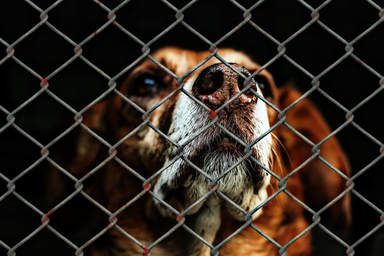 It was July 20, 2006, when I was introduced to the terrible fact that animals die in most of our nation’s animal shelters not because they are suffering or because we have too many of them, but due to complacency and because that’s what so many shelters have done for so long that we’ve all just gotten used to it. This unwelcome epiphany led me to become an animal welfare advocate and specifically a No Kill advocate. I firmly believe that all tax funded animal shelters in our country can, and should be, No Kill facilities where healthy and treatable pets are not destroyed for space or convenience. It is what the public wants and it is what we should expect from ourselves as a progressive society. I am quite outspoken on this issue; for me it is a matter of zero tolerance. You don’t objectify children, you don’t take advantage of the elderly, you don’t drink and drive and you don’t destroy healthy and treatable shelter animals and call it euthanasia. Because it is not. My position has caused me to in a certain amount of conflict over the years. I have been repeatedly blamed for being the messenger as people focus on me, and people like me, rather than focus on the fact that the message is necessary in the first place. I’ve been accused of being naïve, uninformed and uneducated. I’ve been told I cannot possibly appreciate the challenges faced by those in the animal shelter industry and accused of having some hidden agenda against animal shelter directors and animal control personnel (even though I do volunteer work for shelters and animal control personnel). At one point, the No Kill advocacy group I lead became the subject of a hate page on Facebook. A parody of our logo was used as the identification image. Every post we made on our advocacy page was re-posted on the hate page with hostile and inflammatory comments. The kicker was what I call “the monkey butt video.” Someone took the time to download a television PSA I had created for our group, extract the audio track of my voice and add it to another video to make it sound like I was speaking from a monkey’s rectum. I can laugh at it now due to the juvenile nature of this stunt, but I admit it was upsetting at the time. I just couldn’t understand why it was more important for the person who made the video to spend time doing that instead of considering the No Kill programs we were advocating and which we continue to advocate to this day because they work to save the lives of animals. We ultimately determined a shelter employee had set up the page. Many of the supporters who posted comments were from the local rescue community. One was the shelter director herself. I’ve also run across a host of people who are firmly against the concept of No Kill or who try to use the phrase No Kill in ways which are not consistent with the intended purpose. I’ve read positions by elected officials and self-proclaimed animal advocates to the effect that No Kill philosophies lead to institutionalized hoarding of animals, substandard veterinary care and the release of dangerous dogs out into communities where they pose a public safety risk. No, no and no. I’ve encountered people who are focused on statistics as an indicator of No Kill success, focusing on math as opposed to method, leading to situations where people either cook the books to make statistics look better than they actually are or situations where healthy and treatable animals are still destroyed. I’ve also seen people use the phrase No Kill to describe shelter operations which are anything but that and which actually involve criminal behavior. It is this last problem I write about today. In February of 2015, I learned that Bobbie Taylor had sought and obtained the Lawrence County, Alabama, contract to run an animal shelter on her rural property in Moulton. The contract required Taylor to relocate the shelter operation from her rural home in Moulton to a more appropriate location within 6 months. Taylor told the media that she was working to secure two facilities to use and hoped to have the details worked out before the spring. She said that she planned to use $30,000 from the contract to continue paying the animal control officer and the rest would go for animal care, spaying and neutering animals and transporting animals outside of the county. Taylor boasted getting support from both Petco and Petsmart for her efforts and she claimed that she would operate the first county-run no-kill shelter in the state of Alabama. I groaned. I knew of Ms. Taylor by reputation and while I was sure that she meant well, I felt like she was tossing around the phrase No Kill without appreciating what it meant. It has been said that the road to hell is paved with good intentions. Some have said that for a period of approximately three and a half months in 2015, that road led directly to Ms. Taylor’s property in Moulton, Alabama. Allegations of abuse and neglect at Taylor’s “shelter” first began to surface on social media about a month into the contract. There were multiple reports of Taylor’s property having far too many dogs for one person to care for, unsterilized dogs housed in pens together and some dogs seen trying desperately to avoid standing in their own excrement. The situation came to a tipping point on June 24th when a local media outlet did a story which included undercover video made by a volunteer of Taylor striking a dog. The volunteer recounted instances of widespread abuse and neglect and provided images to the media which showed the conditions in which the animals were living. When Taylor refused to allow access to her property so law enforcement authorities could count the number of dogs and investigate the allegations of abuse, a search warrant was sought and obtained. Moulton Police Chief McWhorter was quoted as saying, “It's worse than we ever could have imagined it might be." The search warrant began being executed on June 30th with the help of 28 officials from the American Society for the Prevent of Cruelty for Animals Disaster Response Team which is based in New York. More than 300 animals were seized. ASPCA responders found animals living in filthy, overcrowded conditions. Dead animals were discovered on a daily basis. Some animals were emaciated and many were suffering from medical issues including parvovirus, distemper and untreated wounds. Some of the animals were suffering from such severe medical issues that humane euthanasia was necessary to prevent further suffering. Those animals which could be saved were removed from Taylor’s property by the truckload and taken to another location for medical attention and daily care. A number of the animals were reunited with their original owners, some of whom said they had tried and failed to retrieve their animals from the Lawrence County Animal Shelter in the past. Taylor was arrested on a total of 17 criminal charges stemming from her operation of the shelter at her home. Fifteen of those charges remained when she went to trial in February of 2018. Taylor was found guilty on six of the fifteen counts on February 23, 2018. She was sentenced on May 22, 2018 to 9 months in jail (suspended) and 24 months of probation. She must undergo mental health counseling and pay fines of just over $11,000. During the first three months of her probation, she is subject to random home visits and searches. She can only have the 10 pets she currently owns and cannot acquire more. She cannot possess or have additional animals in her custody as an operator, employee or volunteer at an animal shelter, animal rescue or similar facility. We can all agree that what happened in Moulton in 2015 was tragic. We can all agree that those who suffered most from the events which took place on Taylor’s property were the animals entrusted to her care. Some may argue that Taylor should somehow be excused from the end result. That she did her best with little money and little support. Others would argue that Taylor should somehow be excused from the end result due to her age. She was 81 when she got the contract and is now 84 years of age. Yet others would argue that the county is somehow culpable in the events that transpired on her property; as if they should have known what was happening. Some may even argue that Taylor was trying to run a No Kill operation and did her very best to keep animals alive. Make no mistake, what was taking place on Taylor’s property was not No Kill. No kill is not just about keeping animals alive. When animals are collected on rural properties out of the knowledge and view of the public and law enforcement authorities, that is not No Kill. No kill does not mean slow kill. In the end, the arguments in defense of Taylor are nothing but deflections from the reality of what transpired in our own local version of hell in 2015. Taylor sought the contract. She convinced the Lawrence County Commission that she was capable of managing an animal control officer and managing a shelter operation. She agreed to relocate the operation from her rural property within 6 months. We are told to not discriminate against people based on age and the commission did not. The county commission relied upon Taylor’s representations that she was qualified to manage the operation and many in rescue community stood in support of her abilities. Good intentions do not excuse abuse. Good intentions do not excuse neglect. Had the conditions on Taylor’s property been found on the property of a private individual who did not hold the county contract, the charges would have been the same. Taylor does not get a pass because she held the county contract. The citizens of Lawrence County paid for what happened on Taylor’s property. The animals in most need of help and care paid with their lives and their suffering. And the citizens of Lawrence County paid with the lives of lost animals who were never seen again. I am a No Kill advocate and I always will be. There is no going back. But I have and will continue to call out those who use the phrase No Kill and then engage in behavior I find unethical or criminal. I'm sad about what happened in Moulton. I'm glad it's over. And I hope that the sentence will keep it from happening again. Time will tell. (images courtesy of the Moulton Advertiser, the ASPCA and Peace & Paws Dog Rescue)
When you hear the word “auction,” what image comes to mind? Real estate? Cars? Antiques? Art? Livestock? eBay? How about dogs? Yes. Dogs. Dog auctions are big business in our country and as I blogged about in both 2016 and 2017, some of the biggest customers are people from the animal rescue community. Although many rescuers are quick to criticize people who buy animals in pet stores, they see no issue with cutting out the middleman and going straight to the source. There was a time years ago when rescuers could get former “breeder stock” who were no longer profitable, and who otherwise would have been destroyed, for free. One of the most famous faces in the fight against “puppy mills” and irresponsible breeders is Harley Taylor, the little dog who was rescued after having literally been left in a bucket to die. At around this time, rescuers could get some of the breeder stock slated for auction, but in the very worst shape, for some nominal amount. I have been told about dollar dogs or a deal to sell 50 dogs for three dollars. Yes. Three dollars. The inspiration for National Mill Dog Rescue was a dog named Lily Strader who was purchased at an auction for $20 in 2007. Fast forward to present day and all of that has changed. It changed not so much because the commercial dog breeding industry itself changed, but because of a new buyer at auctions: well meaning rescuers who are so bound and determined to “rescue” or “save” dogs from auctions that they are willing to pay whatever it takes to get dogs, sometimes spending hundreds or thousands on dogs who in prior years would have sold for a fraction of that cost. I am unapologetic in my criticism from people in the rescue community who buy dogs at auction and pay anything more than some nominal amount that may cover the cost of lunch or a tank of gas. A sale is a sale is a sale. I will not revisit my earlier blogs here other than to state one basic fact: while it may seem noble to buy a dog at auction and call it rescue, doing so is incredibly short sighted because it only serves to perpetuate the very industry we all claim to abhor. Yes, that one dog may go on to lead a great life. But that one dog will be replaced by at least one (if not many more) dogs we do not see. And so the industry continues, driven by pricing and demand created by rescuers. One of the first publications to cover this topic was Kim Kavin’s book, “The Dog Merchants” which was published in May of 2016. I am pleased to share that Kim continued her extensive research to go beyond her book and that the efforts of 18 months have come to light for all the public to see and read in the Washington Post Article entitled, “Dog Fight: Dog rescuers, flush with donations, buy animals from the breeders they scorn.” I encourage you to read the article for yourself and then give some serious thought to the whole subject of rescuers at auction. Kim was gracious enough to spend some time to help me blog on this topic and about her article. I hope you find the Q&A informative. (A poodle dog is seen jumping at the Sugarfork Kennels on Wednesday, March 7, 2018, in Goodman, Mo. Photo credit: Salwan Georges/The Washington Post) Your article sets forth facts and evidence which could be interpreted as evidence of criminal behavior by individuals and rescuers. Do you expect any criminal charges to be filed and, if so, how would that come about? What we did with this article is shine a light on a practice that most everyday dog lovers don’t realize is happening, pulling back the curtain on the fact that dog auctions exist and that some rescuers are going there to buy dogs alongside the breeders. Those basic facts, alone, have been a revelation to many dog lovers, based on the comments I’ve seen around the Internet and what I’ve heard from even my own friends and family. We achieved our goal of documenting the fact that this business model is happening in the world of rescue, and that it is widespread, with the rescue and advocacy groups and shelters that we tied to auctions now operating nationwide and into Canada. Now that we have presented the information, how other people choose to use that information, well, that is up to them. Your article makes it sound as though many rescuers have now taken the place of USDA licensed brokers because they buy dogs at auction and then sell them to the public using the phrase "adoption fee." Is this a fair assessment? I think the line in the story that speaks best to that question is this one: “The breeders call ‘retail rescuers’ hypocritical dilettantes who hide behind nonprofit status while doing business as unregulated, online pet stores.” That line was written based on what our reporting showed. Several of the breeders we quoted in the story are USDA licensed and, thus, know how brokers operate. It’s interesting to me that you homed in on that point. So did the Best Friends Animal Society, on its blog, where the Best Friends writer stated: “Breeders refer to these rescuers as ‘hypocritical dilettantes who hide behind nonprofit status while doing business as unregulated, online pet stores.’ It’s hard to argue with that observation while more than 4,100 dogs and cats are still being killed in our nation’s shelters every day.” In my experience, most people who donate to rescue groups knowing full well that they plan to buy dogs at auction think they are doing a good thing. They believe that they are helping rescues save dogs from lives of misery and servitude. What would you say to those people to persuade them that these purchases actually enrich the industry? We do use the word "enrich" in the article. The editors and I discussed, debated and ultimately decided to use that word based on our reporting. We believe our reporting supports it. For some of that reporting, I’d point readers to the quote from Southwest Auction owner Bob Hughes, in the sidebar Q&A, that I think speaks most directly to the way that you asked your question: “I think rescuers do help drive up the prices — but all bidders help. The $18,000 and $12,600 dogs that we broke records selling in February, they didn’t go to rescue. To say that rescuers don’t help the prices, though, would be wrong. . . . Every single person that attends an auction is driving the price up. And if . . . the breeder is determined to get the dog, and the rescue is equally determined to get the dog, that’s going to drive the price.” I’d also point readers to that same Q&A, to the interview with the owner of the Heartland auction, who said: “Prices paid by rescues are higher now. The rescuers come in here with more money than the breeders. … The principle of what’s happening with the rescues is the same at our place as at Southwest, but the prices aren’t the same.” I know of rescuers in my state who travel hundreds of miles to buy dogs at auction while turning a blind eye to the dogs in shelters near them who need to be rescued to stay alive. Is this behavior typical as far as you know? It’s interesting to me that you are asking about that underlying debate within the rescue community, because again, the Best Friends Animal Society did the same thing in its blog. This was the take that Best Friends had on it: “Would it surprise you to learn that the rescue group that purchased the two Cavaliers for $10,000 each is located in Alabama, the state with the third highest number of shelter animals killed annually? Or that the rescue group that purchased the pregnant Frenchie is located in Texas, the state that tops the shelter killing list? Texas kills an estimated 232,000 shelter pets per year and this Texas ‘rescue group’ is buying pregnant dogs from breeders at auctions in Missouri. This is not rescue, this is enabling abuse.” My contacts have told me that the presence of rescuers at auction has completely changed the industry because of their willingness to pay whatever it takes to buy certain dogs. Would you agree? Our reporting included some quotes from breeders who said, “We have breeders that breed for the auction,” and, “A breeder friend of mine said she’s thinking about saving her puppies until they get about a year old and take them to the auction. The rescue people will pay more than the pet-store brokers.” And then in the sidebar Q&As with the auction owners, Hank Grosenbacher, the owner of Heartland, said: “I did have an out-of-state breeder tell me he has heard breeders say, ‘Well shoot, we’ll just start raising dogs and take them to Southwest and sell them to the rescues for high dollars. We’ll just breed for the rescues.’” But it wasn’t only breeders and an auction owner giving us that information. It was also some rescuers. I would point people to the video at the very top of the story, to click “play” right below the headline, where they can see a rescuer—one who knows the commercial-breeding industry well—say very plainly that things have changed in recent years, and that today, “The industry understands that rescue is a piece of the business of the auction.” That rescuer also did a phone interview with me, and she said a similar thing, about rescuers paying high dollar amounts for auction dogs: “They’re creating an industry inside the industry.” I understand your investigation for the article took 18 months and was more work than your research for your book, “The Dog Merchants.” What shocked you most about the results of your investigation? To be honest, I’m most shocked that it happened at all, that an industry insider read “The Dog Merchants” book, felt I was honest and fair in the reporting, and started sending me all these auction invoices and other documents. It’s quite a thing, to have all of that documentation show up in your inbox. The result is that this story is the first time that anyone has ever documented—in dollars and cents—the multimillion-dollar river of cash that is flowing from rescue nonprofits, shelters and dog-advocacy groups through auctions into the pockets of dog breeders. That’s pretty shocking, too, that we were able to shine a light in such a substantive way. I heard that one of the most profitable auctions by Southwest Auction Services in Wheaton, Missouri, was held in early February. I'm told a record was set regarding the amount of money spent by rescuers and the amount spent for a single dog. Do you have any information about that? That sale in early February 2018, according to Southwest’s owner, was his most successful dog auction ever. He sold more than $600,000 worth of dogs, and a breeder paid the highest price ever for a dog at Southwest: $18,000 for a Miniature/Toy Poodle. The top price that a rescue-affiliated buyer paid at that same auction was $8,750 for a pregnant French Bulldog. Readers can see that invoice for the $8,750 Frenchie right on The Washington Post’s website, along with a graphic drawn from other documents we have showing other prices that numerous rescuers have paid for various breeds at the auctions on other dates. Some of the comments made by Bob Hughes make it seem like he has a certain degree of disdain for many rescuers (even though they help his business remain profitable) at worst and marvels at their behavior at best. Is that a fair assessment? I think there are two quotes in the story from Bob Hughes where he answers your question for himself, and he where he is clear about his beliefs regarding rescuers. We used one in the main story, where he states: “I honestly think there are very good, responsible rescues that just love the dogs and want to get them out of the breeding industry. And I think there are malicious, lying, cheating rescues that are in it for the money and the glory and the funding.” Then in the Q&A sidebar, we used a quote from a phone interview that I did with Bob Hughes after I had contacted all of the rescuers, trying to do interviews with them for this story. The rescuers, after receiving my requests for their comment, had apparently picked up the phone and called Bob Hughes. In his own words, this is what happened when he received those calls, prior to the article being published: “I’ve probably had 30 phone calls from rescuers about this story. I told them I have empathy for them, but just no sympathy. Where were they when all the lies were being told about the breeders? You never once stood up. You never corrected a story. You keep painting us all with the same brush. You keep calling all of us ‘puppy mills.’ You want to use the word ‘puppy mill’ to describe the whole industry, and you’re part of it, but you don’t want to be accused of being part of it. Well, what goes around comes around.” What do you hope the takeaway is from your article for the general public? What our reporting shows is that most consumers don’t even know that dog auctions exist, let alone that breeders and rescuers are doing business side-by-side inside of them. Our story looks at the controversy surrounding this segment of the rescue world, so consumers can understand what’s going on, ask smart questions and make up their own minds. I’ve seen in some of the comments posted around the Internet that average people are saying exactly that: They plan to ask more questions no matter where they get their next dog. That means we’ve made them aware, that we’ve done our job in shining a light on the facts for them to use as they wish. What do you hope changes regarding rescuer behavior as a result of your article? Based on the comments I’ve seen around the Internet, I think the same answer applies. We’ve shined a light on facts that, based on their own comments, even some rescuers didn’t fully understand. Our reporting showed that while some rescuers have been going to the auctions for a decade or longer, in the past three to five years, the amounts of money that some rescuers are spending to buy dogs from breeders at auctions has really increased. So has the percentage of business that the rescuers make up, based on our reporting. The owner of America’s biggest government-regulated dog auction told us that rescuers now make up 30 to 40 percent of his business. (individual dog images courtesy of National Mill Dog Rescue)
|
AuthorI am an animal welfare advocate. My goal is to help people understand some basic issues related to companion animals in America. Awareness leads to education leads to action leads to change. Archives
July 2024
Categories
All
image courtesy of Terrah Johnson
|

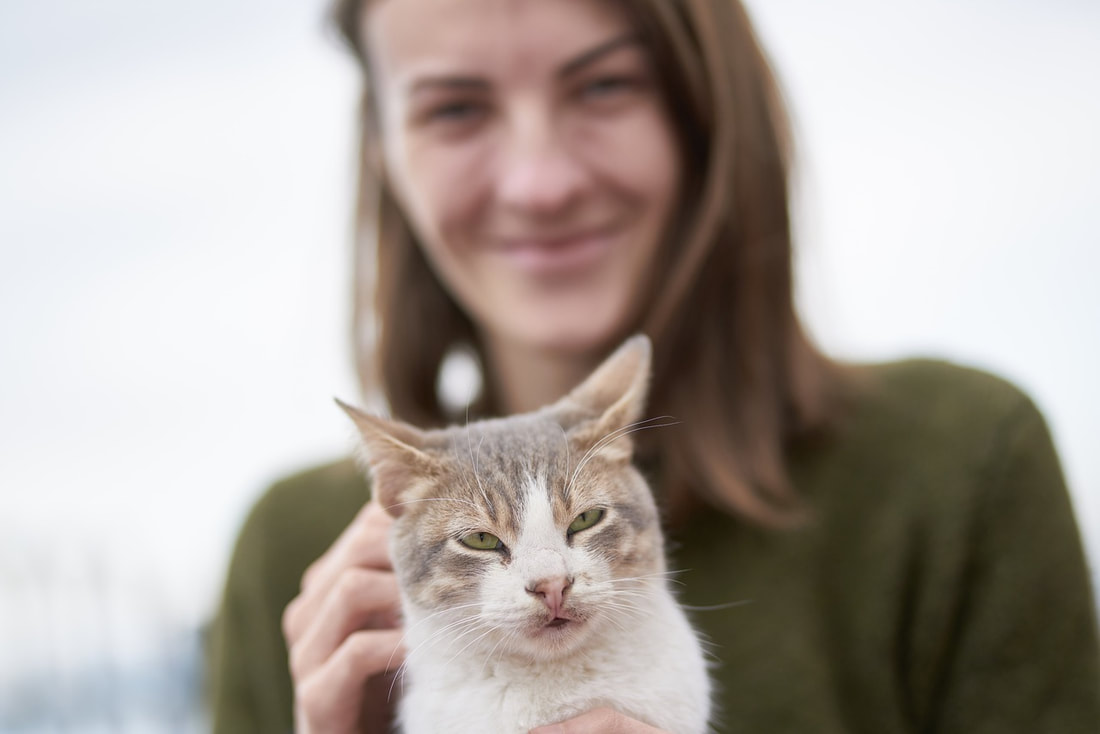
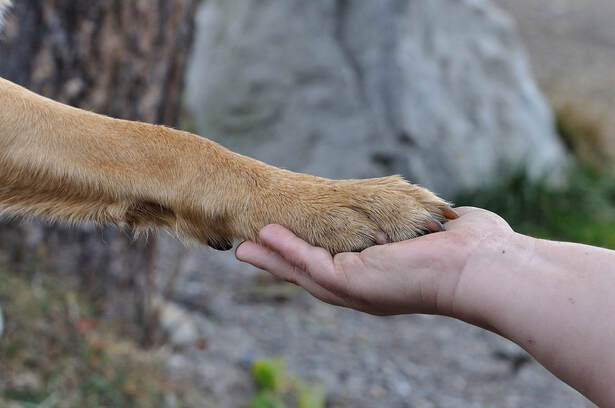



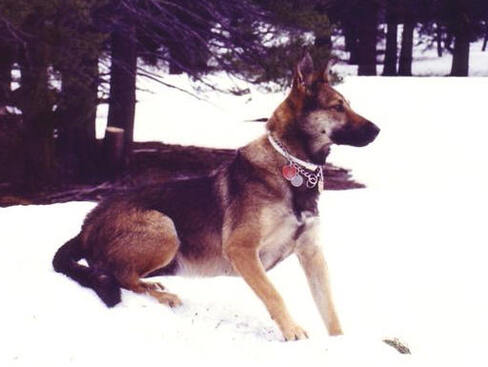
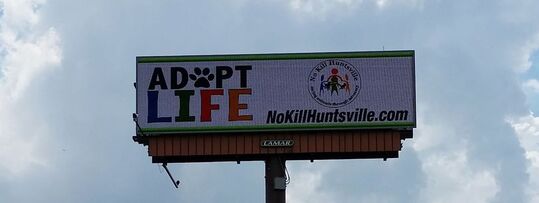
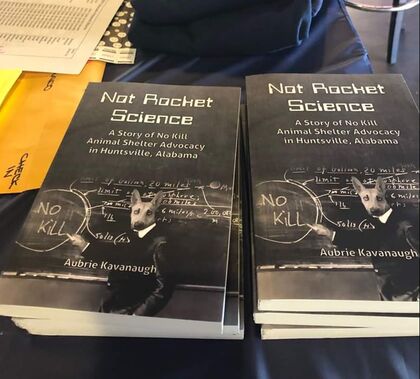



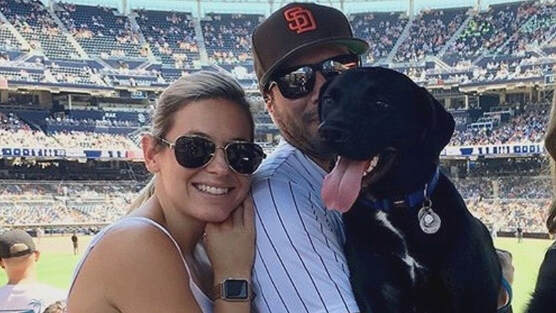



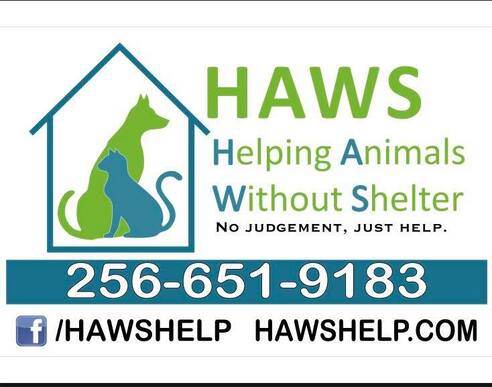
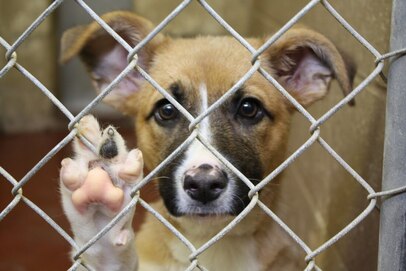


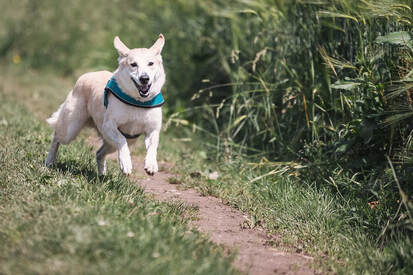
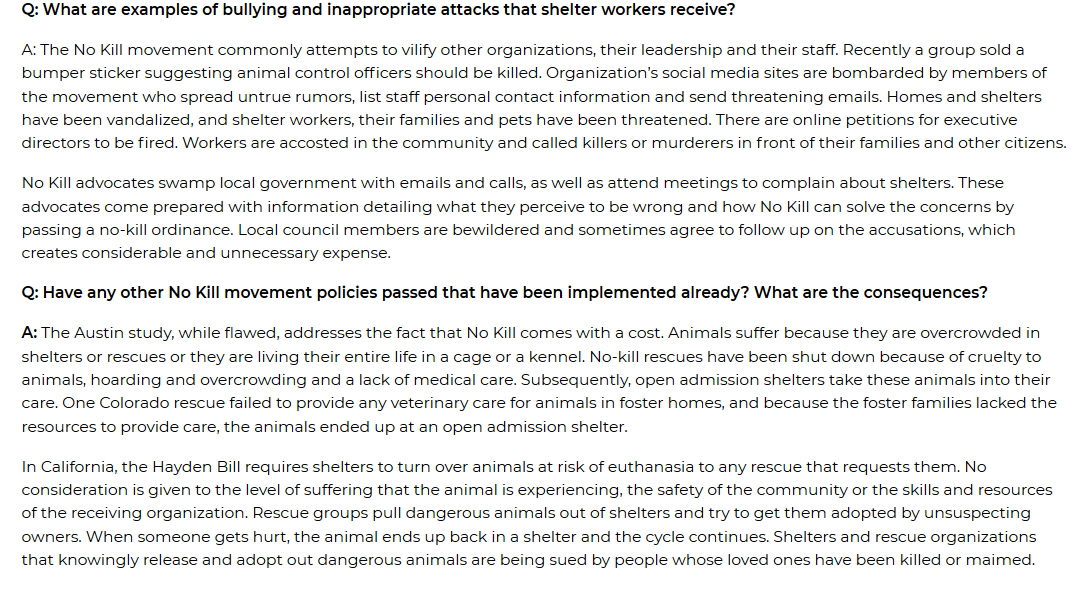

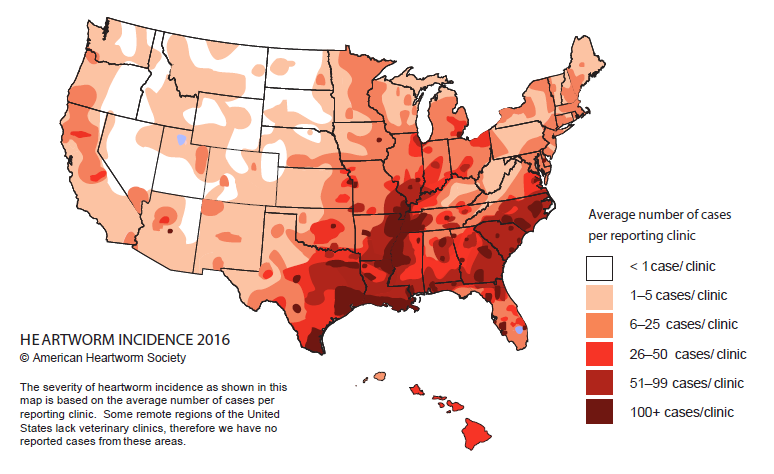
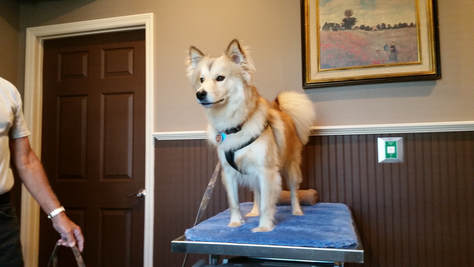

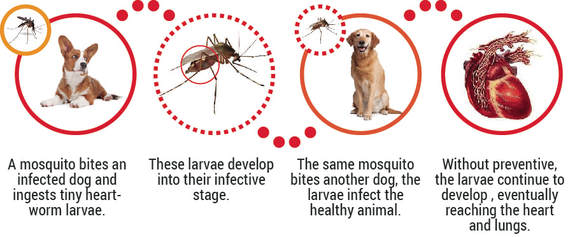
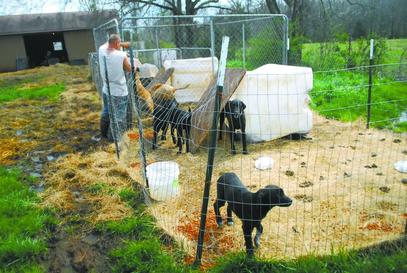
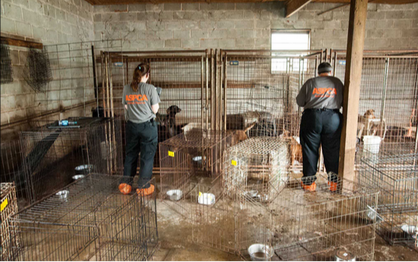
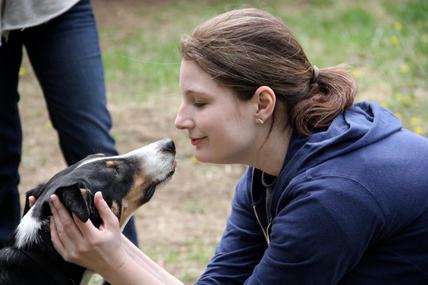
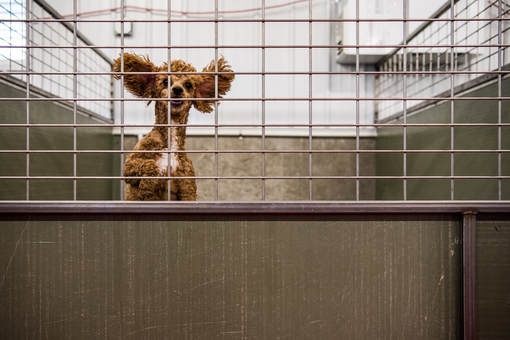




 RSS Feed
RSS Feed